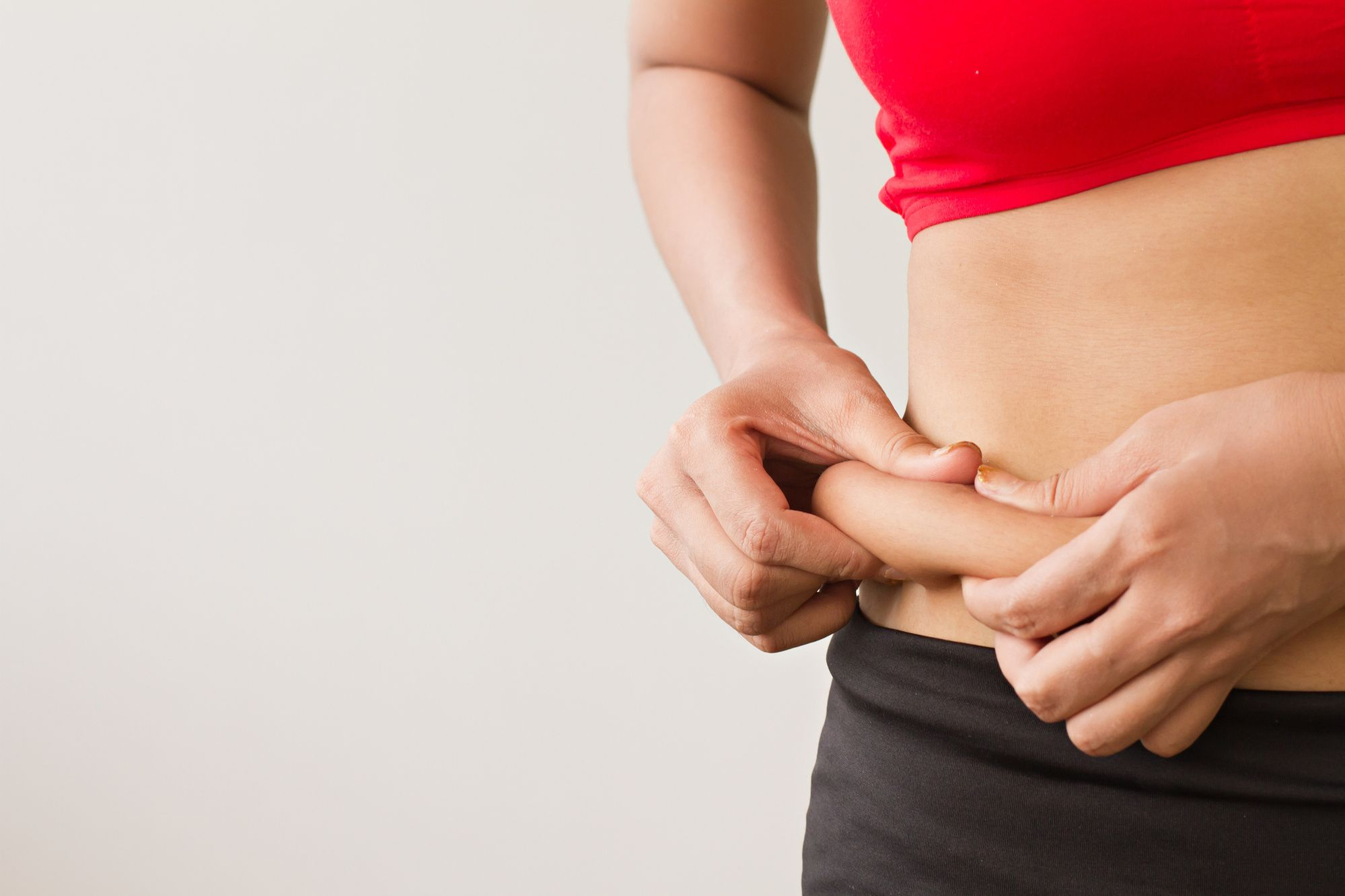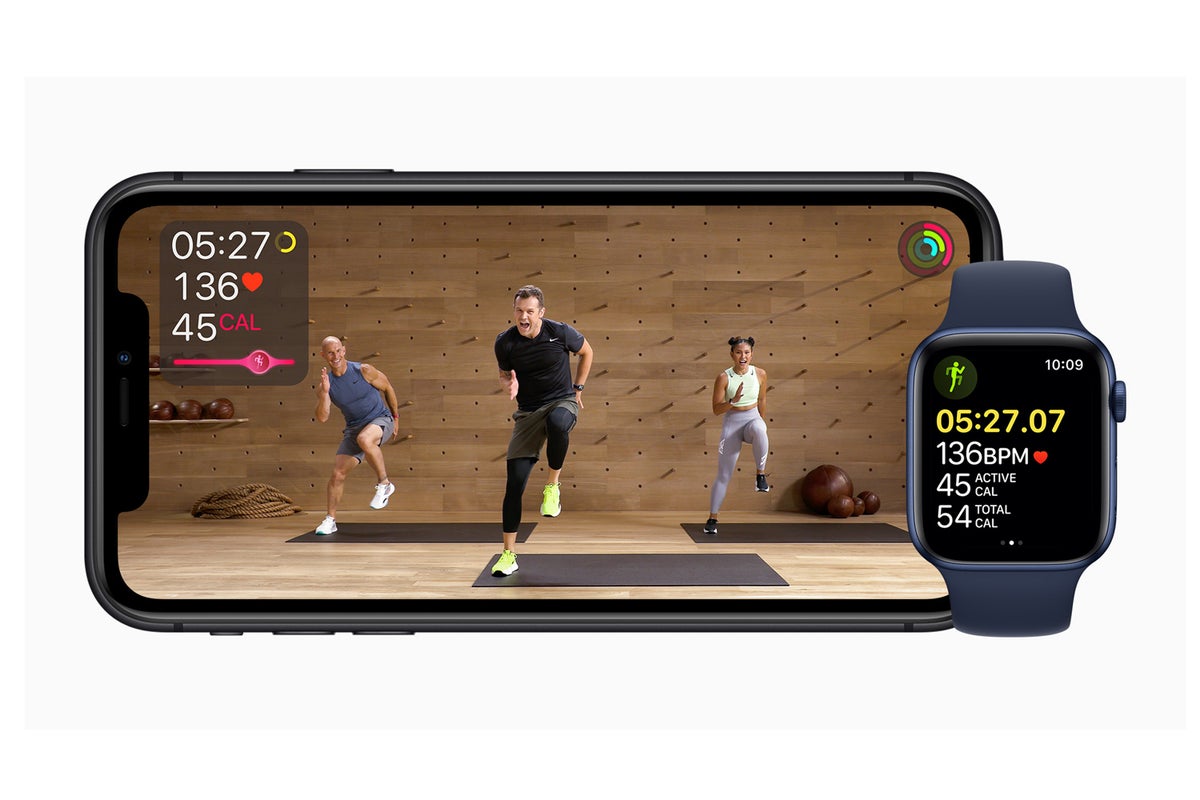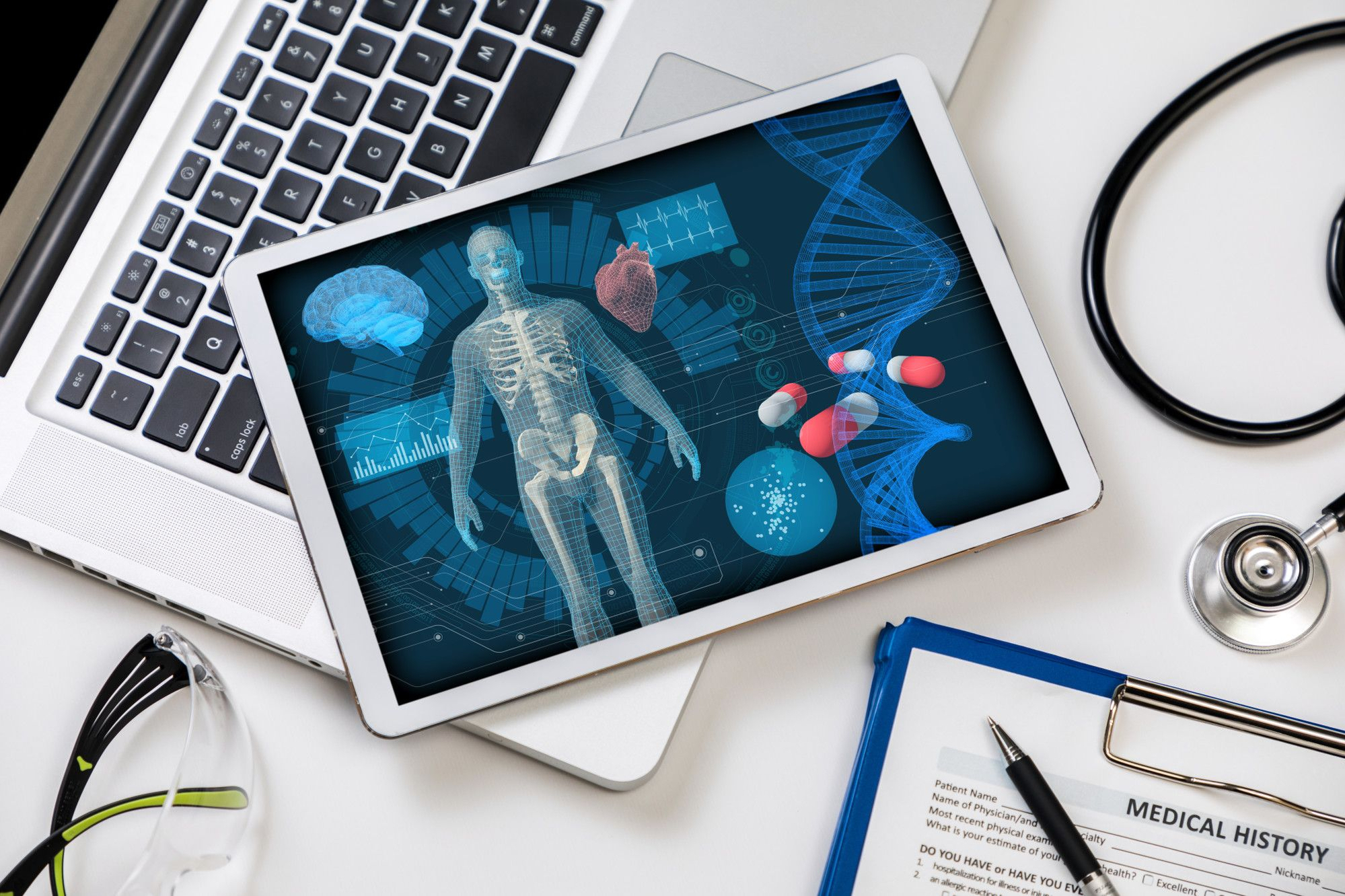According to data from the National Health and Nutrition Examination Surveys, the average American adult has between 28% and 40% body fat.
It might not come as a surprise to you that Americans, on average, are carrying around more body fat than necessary, since America is undergoing a well-publicized battle with obesity. Between 2017 and 2018, the CDC found that 42.4% of American adults were obese.
Whether you are just at the start of your weight loss journey or you are more interested in tightening and toning, understanding body composition can help you to set and reach fitness goals. Committing to a series of body composition exercises can help you ensure that you achieve the body composition that is healthy for you.
What exactly is body composition and how do you measure it? Let's take a look at everything you need to know.
What Is Body Composition?
Maybe you've come across the term "body composition" when reading through fitness forums or when you've been doing research to fine-tune your workout routine. But what is body composition, exactly, and why is it a useful metric?
Basically, body composition is a term that refers to the two different types of mass that your body is made up of. These mass types are body fat and non-fat mass.
Your body fat is located around your organs (which is known as visceral fat) or under your skin (subcutaneous fat). In order to be as healthy as possible, it is vital to have some fat. Fat can help your body store the fuel for energy, protect internal organs, and regulate your hormones. That being said, many individuals find themselves carrying non-essential body fat and have more fat stored than necessary for the healthy functioning of their body.
Your non-fat mass refers to the rest of your mass that isn't fat, including muscle, water, bone, tissues, and organs.
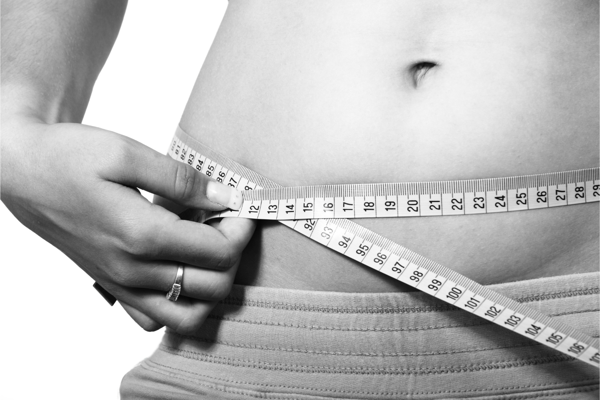
Healthy Body Composition
A healthy body composition for you might be different than it is for other people. It's important to understand that it is actually a health problem in its own right to have an extremely low body fat percentage. While athletes do tend to have a lower body fat than normal people, some essential fat is required for optimal health.
The American Council on Exercise suggests that a healthy range for female athletes ranges between 14% to 20%, which for male athletes this range is 6% to 13%.
On the other hand, having a body fat percentage over 32% for women is what the American Council on Exercise considered obese. For men, this percentage is over 25%.
In between, are the ranges of body fat percentage for men and women that imply an individual is fit or simply has an acceptable body fat percentage.
The range of body fat percentages for fit women is between 21% and 24%. For fit men, these figures are between 14% and 17%.
An acceptable amount of body fat for women is considered to range between 25% and 31%. For men, and acceptable percentage of body fat is between 18 and 25%.
When you own a health club, growth is likely one of your main focuses. Check out these 6 strategies that actually work to grow your health club.

What Are the Factors That Affect Body Composition
There are a number of factors that are going to influence your body composition. These include age, genes, hormones, and sex.
As people get older, they tend to lose muscle mass and have a slower metabolism. This is not always the case, however, if a person doesn't maintain their muscle mass with sufficient weight training, their muscle mass can be lost over time.
Our genes play a role in what our body composition's natural tendencies are. Some people might have the tendency to retain fat in certain parts of their bodies. Others might have a tendency to be naturally lean.
Another factor that can impact their body composition is hormones. One way that hormones can affect body composition is through their influence on water retention.
Lastly, women tend to have more body fat than men do. This is why the body fat percentages for healthy body composition are different for men than they are for women.
It's important to understand that all people are different. There are, however, three body composition examples that are considered standard styles of skeletal frame and body composition. The three types of standard body composition examples include ectomorphs who are long and lean, endomorphs who are composed of a lot of both fat and muscle, and mesomorphs who are strong, athletic, and solid.
Are you looking for ways to improve your member experience at your health club? Read our article on this topic here.
How Do You Measure Body Composition?
Most people that are passionate about fitness have probably considered purchasing a body composition scale at some point. But how is a scale measuring the percentage of body fat in your body? These body composition scales utilize something called bioelectrical impedance analysis, which is just one of the many ways that body composition can be measured.
Determining your body composition through a scale, might not be the most accurate way to find out your body fat percentage. Let's take a look at many of the most popular methods for measuring body fat percentage. Some of these methods can be done at home with only a few tools, while others require professional medical equipment.
Offering body composition measurement tools at your gym is a great way to increase value with your packages.
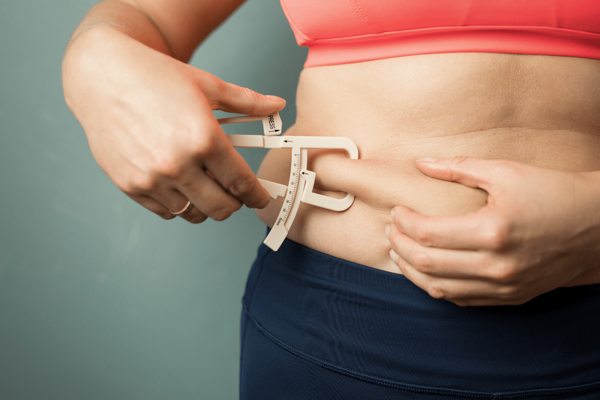
Skin Calipers
This method of body fat measurement has been used for over 50 years. Using skin calipers is a way of measuring subcutaneous fat and not visceral fat. The way this is achieved is by measuring at different sites of the body, which are different for men and women.
While a skilled person with a decent knowledge of anatomy can guesstimate a fairly accurate body fat percentage this way, an unskilled person might end up being much less accurate.
This is a fairly invasive method that involved pinching the subject. It can be uncomfortable for both parties involved.

Bioelectrical Impedance Analysis (BIA)
This method relies on placing electrodes on your skin to determine how your body reacts to small electrical currents. Alternatively, the electrodes can be built into a scale or on handles. This allows you to either just grab handles or stand on a scale.
Some of these electrodes are tasked with sending the current through your body, while others are tasked with receiving the current after it's passed through your mass. Since the electrical current moves through fat and muscle differently due to their differences in water content, the received electrical currents can give you a prediction of your body composition.
This is a relatively easy method that doesn't take long to perform. However, the accuracy isn't always spot on and can vary on the food and fluid intake of the participant. Whether or not you just exercised can also have an impact on the accuracy.
For BIA devices that have electrodes in a scale, they tend to only predict fat in the lower torso and completely miss fat in the upper torso. These tend to be consumer scales, which incorrectly display the reading as your total whole body fat.
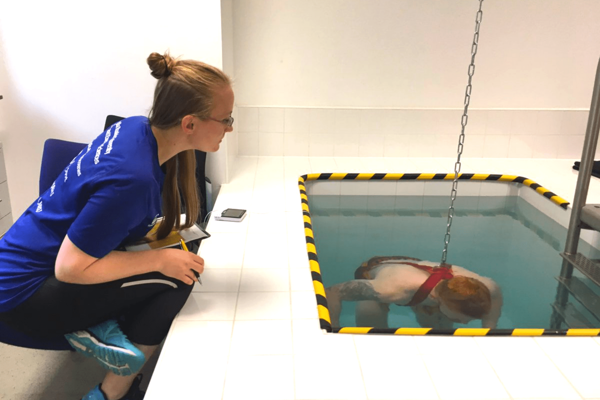
Hydrostatic Weighing
You might also hear this method referred to as hydrodensitometry or underwater weighing. Basically, you exhale as much air as possible out of your lungs before submerging yourself in water to be weighed. You will subsequently be weighed on land and the air in your lungs will be measured or estimated.
Not all individuals are able to perform the necessary tasks to run this testing, however, it is quite accurate when performed correctly.
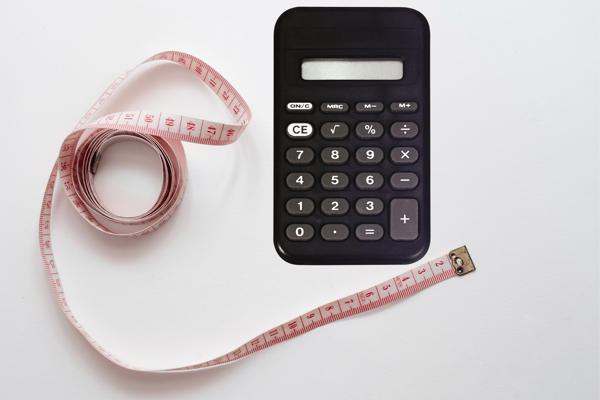
US Navy/Circumference Method
The accuracy and precision of the US Navy Body Composition program can vary greatly, however it is an affordable and easy way to get a sense of one's body composition. All that's needed for this tactic is a calculator and a flexible measuring tape.
In order to make this calculation, one just needs a handful of circumference measurements as well as an individual's height and age.
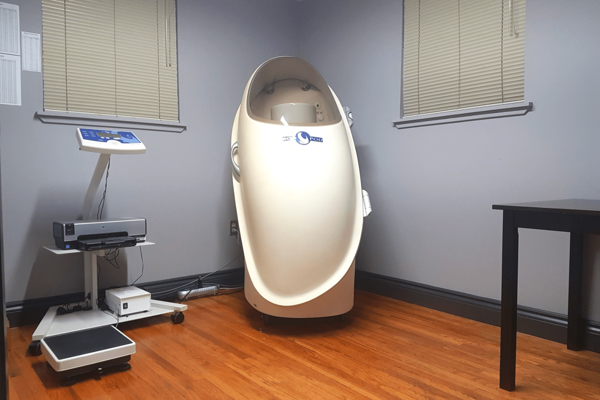
Air Displacement Plethysmography (Bod Pod)
This method is quite similar to hydrostatic weighing, in that it is using the density of your body to estimate your body fat percentage. Instead of water, however, air is used in this method. It requires that you sit in a chamber for a number of minutes while the air pressure inside the chamber is altered.
While this method can be quite accurate, the equipment necessary can be quite expensive. Therefore, it is not common for people to have access to this method of body composition measurement.
This is a volume displacement method, just like Hydrostatic weighing where the attempt is to determine your body's total volume. By making an assumption regarding the density of various components (like fat, water, muscle, and bone) they can calculate the individual component masses (since Mass = Density x Volume).
The troubles with this method as well as with Hydrostatic Weighing, is that although the density of water is well known and constant, the density of bone, muscle, and fat can vary greatly. Often times, this leads to underestimations of fat mass. That being said, Air Displacement Plethysmography is far more repeatable and precise than Hydrostatic weighing. So, if you’re measuring your body fat over time, this method is more reliable in revealing trends. This is also an invasive method that you don’t typically see offered in commercial settings.
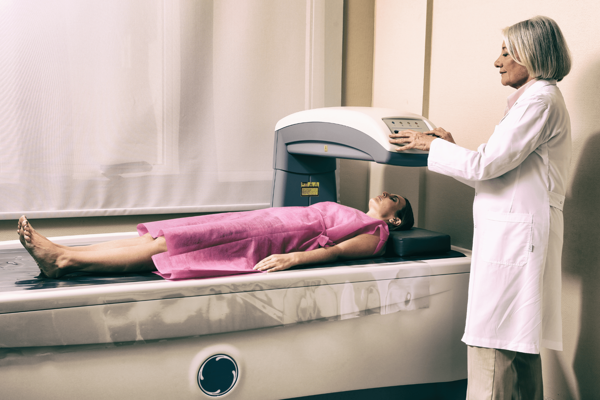
Dual-Energy X-Ray Absorption (DXA)
Another way that your body fat percentage can be estimated is through DXA. During this method, you are required to lie on your back for roughly 10 minutes while you are scanned with x-rays containing two different energies.
This method can also assess your bone density and give information about your thoughts, lean mass, and bone in your different body regions.
The general public does not typically have access to DXAs, as they do deliver a small amount of radiation and are quite expensive. A person would likely only encounter this type of equipment in research or medical settings. The results of this type of method can be more consistently accurate than some of the other methods listed here.
This method is considered the gold standard device or criterion by which other methods are judged against in terms of accuracy and precision. With that being said, the true medical grade gold standard is what’s called the “4 compartment model” where several methods are used to isolate and identify various components. Although this is typically not practical for commercial uses as it can take a full day to get assessed and be costly in some cases.
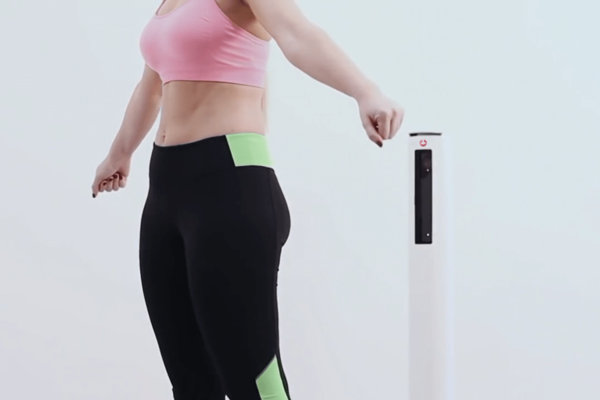
3D Body Scanning
3D body scanning is another method that you can estimate your body fat percentage and body composition. This equipment utilizes infrared sensors in order to generate a 3D model of your body. This method is quick and easy, with the individual either standing on a rotating platform or standing still while sensors rotate around the body.
This method is a bit similar to circumference measurements, but far more accurate and precise. A typical tape measure can only offer 0.5-1 inch accuracy and repeatability, whereas a 3D body scanners can have errors as low as than 0.1 inches. Moreover, the 3D visuals make a difference in helping people visualize their shape and how it may be responding to your fitness or training program.
3D body scanners are a wonderful middle ground between some of the research facility level tactics and those that are less accurate but more accessible methods of estimating body fat. This can be a great addition to any fitness facility, allowing your members to help quantify their fitness goals and progress.
STYKU Body Composition Scanner: The Best Tool For the Task!
Is it time that your fitness facility offered powerful resources such as the STYKU commercial body composition scale? If so, contact us today to request a quote or ask us any questions you might have. We're here to help!


